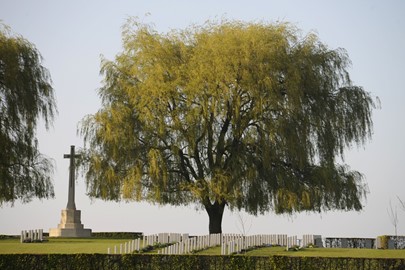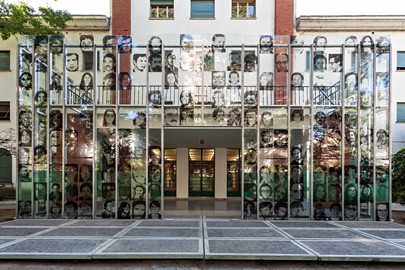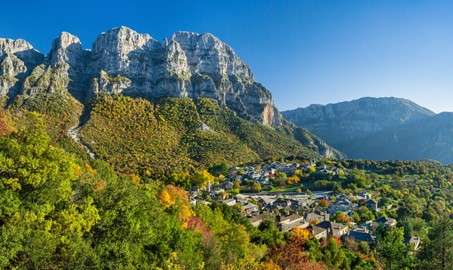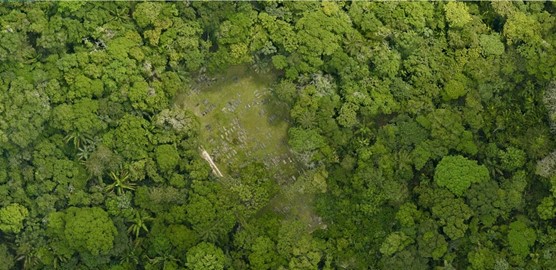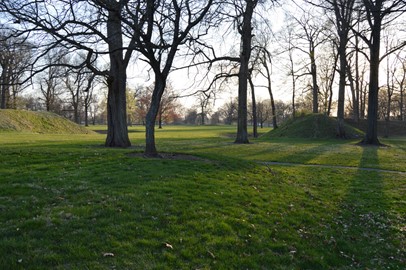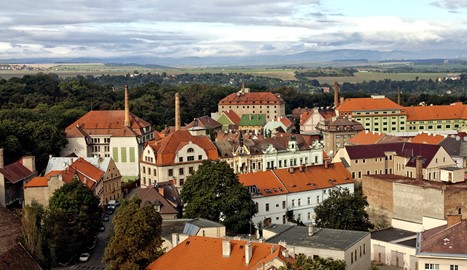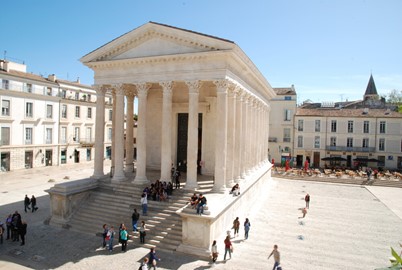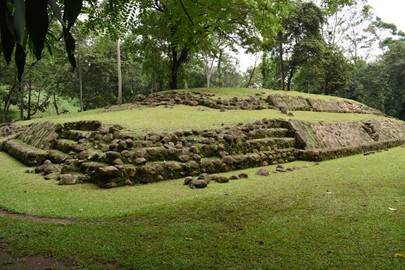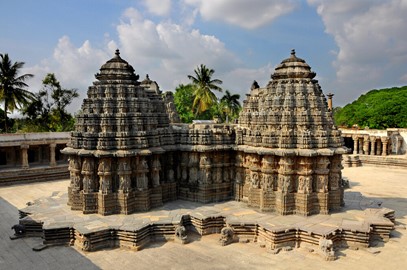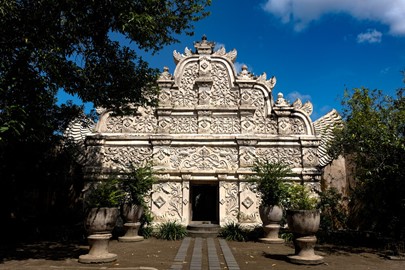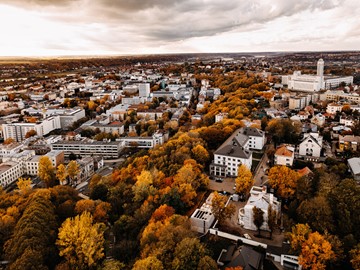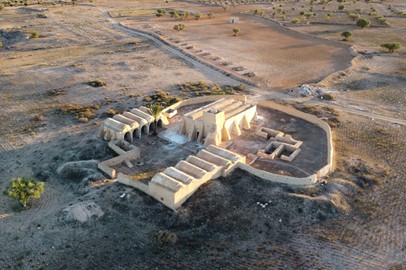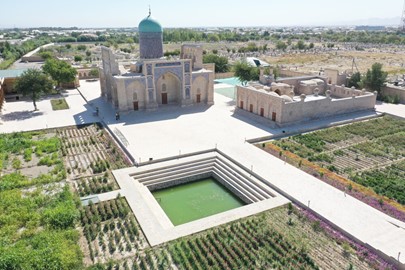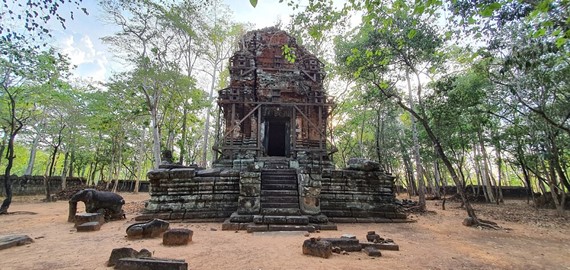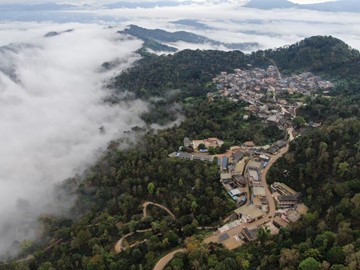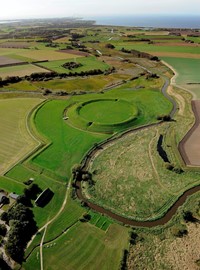category :: cultural
Funerary and memory sites of the First World War
This transnational serial property encompasses sites along the First World War Western Front, where war was fought between the German and the Allied forces between 1914 and 1918. Located between the north of Belgium and the east of France, the component parts of the property vary in scale from large necropolises, holding the remains of tens of thousands of soldiers of several nationalities, to tiny and simpler cemeteries, and single memorials. The sites include different military cemeteries, battlefield bur... Read More
Memorial sites of the Rwanda Genocide
Between April and July 1994, an estimated one million people were killed across Rwanda by armed militias called Interahamwe that targeted Tutsi, but also executed moderate Hutu and Twa people. The victims of the genocide are commemorated in this serial property composed of four memorial sites. Two of the component parts were scenes of massacres: a Catholic church built in the hill of Nyamata in 1980, and a technical school built in the hill of Murambi in 1990. The hill of Gisozi in Kigali City hosts the Kig... Read More
ESMA Museum and Site of Memory
This property is located within the complex of the Former Navy School of Mechanics in Buenos Aires, in the former Officers’ Quarters. This was the Argentine Navy’s principal secret detention centre during the civil-military dictatorship of 1976-1983. As part of a national strategy to destroy armed and nonviolent opposition to the military regime, the Officers' Quarters building at ESMA (Escuela Superior de Mecánica de la Armada) was used for holding captive opponents who had been abducted in Buenos Aires an... Read More
Zagori
Located in a remote rural landscape in northwestern Greece, small stone villages known as Zagorochoria extend along the western slopes of the northern part of the Pindus mountain range. These traditional villages, typically organized around a central square containing a plane tree and surrounded by sacred forests maintained by local communities, showcase a traditional architecture adapted to the mountain topography. A network of stone-arched bridges, stone cobbled paths, and stone staircases linking the vil... Read More
Eisinga Planetarium
Built between 1774 and 1781, this property is a moving mechanical scale model of the solar system as it was known at the time. Conceived and built by an ordinary citizen – the wool manufacturer Eise Eisinga – the model is built into the ceiling and south wall of the former living room/bedroom of its creator. Powered by one single pendulum clock, it provides a realistic image of the positions of the Sun, the Moon, the Earth and five other planets (Mercury, Venus, Mars, Jupiter and Saturn). The planets revolv... Read More
Jodensavanne Archaeological Site
Located on the densely forested banks of the Suriname River, the Jodensavanne Archaeological Site in northern Suriname is a serial property that illustrates early Jewish colonization attempts in the New World. The Jodensavanne Settlement, founded in the 1680s, includes the ruins of what is believed to be the earliest synagogue of architectural significance in the Americas, along with cemeteries, boat landing areas, and a military post. The Cassipora Creek Cemetery is the remnant of an older settlement found... Read More
Si Thep
This is a serial property of three component parts: a distinctive twin-town site, featuring an Inner and Outer Town surrounded by moats; the massive Khao Klang Nok ancient monument; and the Khao Thamorrat Cave ancient monument. Together these sites represent the architecture, artistic traditions and religious diversity of the Dvaravati Empire that thrived in Central Thailand from the 6th to the 10th centuries, demonstrating the influences from India. The local adaptation of these traditions resulted in a di... Read More
Wooden Hypostyle Mosques
This serial property is comprised of five hypostyle mosques built in Anatolia between the late 13th and mid-14th centuries, each located in a different province of present-day Türkiye. The unusual structural system of the mosques combines an exterior building envelope built of masonry with multiple rows of wooden interior columns (“hypostyle”) that support a flat wooden ceiling and the roof. These mosques are known for the skilful woodcarving and handiwork used in their structures, architectural fittings, a... Read More
Hopewell Ceremonial Earthworks
This property is a series of eight monumental earthen enclosure complexes built between 2,000 and 1,600 years ago along the central tributaries of the Ohio River. They are the most representative surviving expressions of the Indigenous tradition now referred to as the Hopewell culture. Their scale and complexity are evidenced in precise geometric figures as well as hilltops sculpted to enclose vast, level plazas. There are alignments with the cycles of the Sun and the far more complex cycles of the Moon. Th... Read More
Khinalig
This cultural landscape is comprised of the high-mountain Khinalig village in northern Azerbaijan, high-altitude summer pastures and agricultural terraces in the Greater Caucasus Mountains, winter pastures in the lowland plains in central Azerbaijan, and the connecting 200-kilometre-long seasonal transhumance route called Köç Yolu (“Migration Route”). The village of Khinalig is home to the semi-nomadic Khinalig people, whose culture and lifestyle are defined by the seasonal migration between summer and wint... Read More
Žatec
This cultural landscape has been shaped for centuries by the living tradition of cultivating and trading the world’s most renowned hop variety, used in beer production around the globe. The property includes particularly fertile hop fields near the river Ohře that have been farmed continuously for hundreds of years, as well as historic villages and buildings used for processing hops. Urban elements of the property include the medieval centre of Žatec and its 19th to 20th century industrial extension, kn... Read More
Maison Carrée of Nîmes
Erected in the 1st century CE in the Roman colony of Nemausus – today’s Nîmes in France – the Maison Carrée is an early example of a Roman temple associated with imperial worship in the provinces of Rome. Dedicated to the prematurely deceased heirs of Augustus, the Princes of Youth, this edifice fostered Rome’s control over its conquered territory while symbolically announcing the allegiance of the population of the city of Nemausus to the dynastic line of Augustus. The architecture and elaborate decora... Read More
Tak’alik Ab’aj
Tak’alik Ab’aj is an archaeological site located on the Pacific Coast of Guatemala. Its 1,700-year history spans a period that saw the transition from the Olmec civilization to the emergence of Early Mayan culture. Tak’alik Ab’aj had a primary role in this transition, in part because it was vital to the long-distance trade route that connected the Isthmus of Tehuantepec in today's Mexico to present-day El Salvador. Ideas and customs were shared extensively along this route. Sacred spaces and buildings were ... Read More
Sacred Ensembles of the Hoysalas
This serial property encompasses the three most representative examples of Hoysala-style temple complexes in southern India, dating from the 12th to 13th centuries. The Hoysala style was created through careful selection of contemporary temple features and those from the past to create a different identity from neighbouring kingdoms. The shrines are characterized by hyper-real sculptures and stone carvings that cover the entire architectural surface, a circumambulatory platform, a large-scale sculptural gal... Read More
Yogyakarta
The central axis of Yogyakarta was established in the 18th century by Sultan Mangkubumi, and has continued from that time as a centre of government and Javanese cultural traditions. The six kilometre north-south axis is positioned to link Mount Merapi and the Indian Ocean, with the Kraton (palace) at its centre, and key cultural monuments lining the axis to the north and south that are connected through rituals. It embodies key beliefs about the cosmos in Javanese culture, including the marking of the cycle... Read More
Modernist Kaunas
This property testifies to the rapid urbanization that transformed the provincial town of Kaunas into a modern city that became Lithuania’s provisional capital between the First and Second World Wars. Its community-driven transformation of an urban landscape was adapted from an earlier town layout. The quality of modern Kaunas was manifested through the spatial organization of the Naujamiestis (New Town) and Žaliakalnis (Green Hill) areas, and in public buildings, urban spaces and residences constructed dur... Read More
Astronomical Observatories of Kazan Federal University
The property is comprised of two component parts: one in the historical centre of Kazan and the other in a forested suburban area west of the city. The Kazan City Astronomical Observatory, built in 1837, is located on the University campus and the building is characterized by a semi-circular façade and three towers with domes built to house astronomical instruments. The suburban Engelhardt Astronomical Observatory includes structures for sky observations and residential buildings, all located within a park.... Read More
Talayotic Menorca
Located on the island of Menorca in the western Mediterranean Sea, these archaeological sites are situated in agro-pastoral landscapes. A testimony to the occupation of the island by prehistoric communities, these sites display a diversity of prehistoric settlements and burial places. The materials, forms and locations of structures dating from the Bronze Age (1600 BCE) to the Late Iron Age (123 BCE) show the evolution of a “cyclopean” architecture built with very large blocks of stone. Astronomical orienta... Read More
Djerba
This serial property is a testimony to a settlement pattern that developed on the island of Djerba around the 9th century CE amidst the semi-dry and water-scarce environment. Low‑density was its key characteristic: it involved the division of the island into neighbourhoods, clustered together, that were economically self-sustainable, connected to each other and to the religious and trading places of the island, through a complex network of roads. Resulting from a mixture of environmental, socio-cultural and... Read More
Gordion
Located in an open rural landscape, the archaeological site of Gordion is a multi-layered ancient settlement, encompassing the remains of the ancient capital of Phrygia, an Iron Age independent kingdom. The key elements of this archaeological site include the Citadel Mound, the Lower Town, the Outer Town and Fortifications, and several burial mounds and tumuli with their surrounding landscape. Archaeological excavations and research have revealed a wealth of remains that document construction techniques, sp... Read More
Silk Roads: Zarafshan Karakum Corridor
The Zarafshan-Karakum Corridor is a key section of the Silk Roads in Central Asia that connects other corridors from all directions. Located in rugged mountains, fertile river valleys, and uninhabitable desert, the 866-kilometre corridor runs from east to west along the Zarafshan River and further southwest following the ancient caravan roads crossing the Karakum Desert to the Merv Oasis. Channelling much of the east-west exchange along the Silk Roads from the 2nd century BCE to the 16th century CE, a large... Read More
Koh Ker
The archaeological site of Koh Ker is a sacred urban ensemble of numerous temples and sanctuaries including sculptures, inscriptions, wall paintings, and archaeological remains. Constructed over a twenty-three-year period, it was one of two rival Khmer Empire capitals – the other being Angkor – and was the sole capital from 928 to 944 CE. Established by King Jayavarman IV, his sacred city was believed to be laid out on the basis of ancient Indian religious concepts of the universe. The new city demonstrated... Read More
Tr’ondek Klondike
Located along the Yukon River in the sub-arctic region of Northwest Canada, Tr’ondëk-Klondike lies within the homeland of the Tr’ondëk Hwëch’in First Nation. It contains archaeological and historic sources that reflect Indigenous people’s adaptation to unprecedented changes caused by the Klondike Gold Rush at the end of the 19th century. The series illustrates different aspects of the colonization of this area, including sites of exchange between the Indigenous population and the colonists, and sites demons... Read More
Tea Forests of the Jingmai Mountain
Located on Jingmai Mountain in southwestern China, this cultural landscape was developed over a thousand years by the Blang and Dai peoples following practices that began in the 10th century. The property is a tea production area comprised of traditional villages within old tea groves surrounded by forests and tea plantations. The traditional understorey cultivation of old tea trees is a method that responds to the specific conditions of the mountain’s ecosystem and subtropical monsoon climate, combined wit... Read More
Viking Age Ring Fortresses
These five archaeological sites comprise a system of monumental ring-shaped Viking-Age fortresses sharing a uniform geometric design. Constructed between about 970 and 980 CE, the fortresses at Aggersborg, Fyrkat, Nonnebakken, Trelleborg and Borgring were positioned strategically near important land and sea routes, and each made use of the natural topography of their surrounding landscape for defensive purposes. They are an emblematic demonstration of the centralized power of the Jelling Dynasty, and a test... Read More
